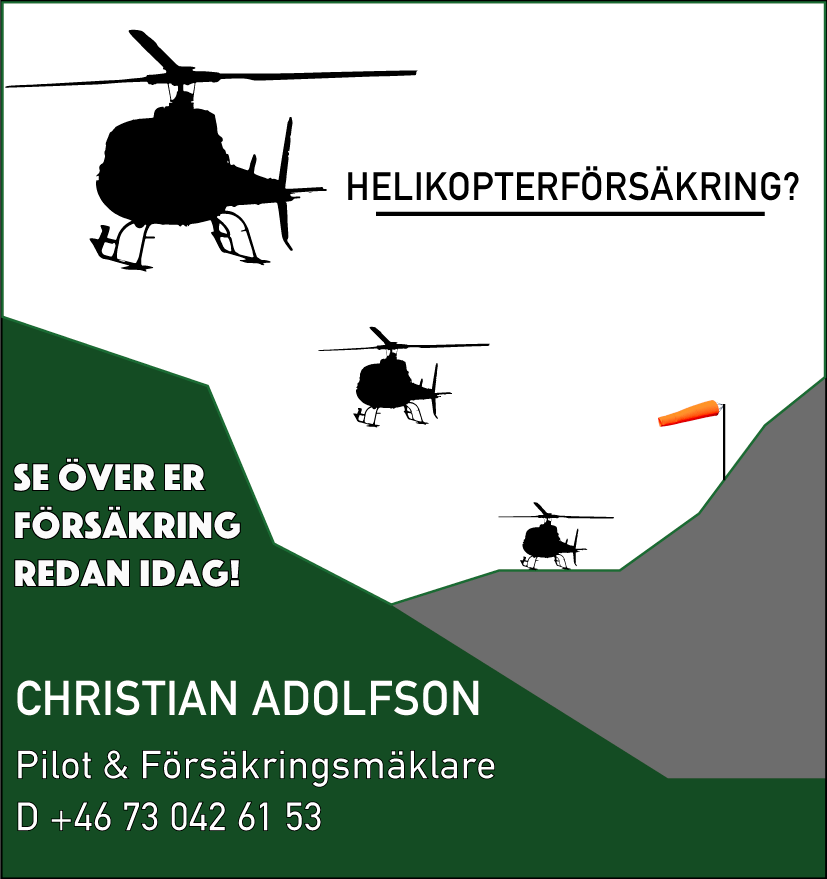SE-HPR
Information
Manufactured year
2001
Call sign
-
Serial number
0189
Registration history
SE-HPR
(? - Now)
D-HECL
(? - Now)
Type history
Eurocopter EC 135 P2
Operator history
Swedish Police Wing
(? - Now)
Eurocopter Deutschland GmbH
(? - Now)
Information
The need for a twin engine helicopter type in the Swedish Police Wing was significant in the end of the 90’s. The police currently had a fleet of four Long Rangers, three Jet Rangers and one Bell 47. The most of the helicopters were more than 20 years old and some of them had accumulated more than 20 000 hours. The change came in year 2000. On June 26 the National Police signed an order of three brand new Eurocopter EC 135 P2 helicopters, with an option for three additional machines. The option was redeemed on 30 October the same year, which made the police a fairly large EC 135 costumer, with six helicopters ordered.A seventh machine was ordered in May of 2001. All the seven helicopters were ordered through the Eurocopter dealer Michael Savbäck AB and were manufactured at the Eurocopter Deutschland plant at Donauwörth, in southern Germany.
This helicopter, SE-HPR, was constructed in 2001 and was delivered to Sweden in early August the same year. The machine, which was the launch aircraft, was flown to the Stockholm base at Tullinge airfield, the head quarter of the Police Wing at that time. A few days later, on August 10, the aircraft was handed over by Dr. Siegfried Sobotta, Senior Executive Vice President of the Eurocopter Group, to Sten Heckscher, commander of the National Police Board, in a ceremony at the helicopter base. Approx 50 specially invited visitors got to see the brand new state-of-the-art EC 135 helicopter in a breath-taking private air show. The historic day was concluded with the last official in-service landing of the last Bell 47 helicopter (SE-HPG).
SE-HPR had a rather unique livery - the tail cone was white instead of the currently blue coloured tail of the present machines. The white tail cone was said to look too sad and shy, so the detail was changed on the later helicopters.
SE-HPR was given the callsign POLIS 950, a name that was inherited after the Long Ranger SE-HPL which was destroyed in a crash in February the same year. The EC 135 was a historic step in the history if police aviation. But a lot of work still remained until the helicopter could enter active police service. The whole autumn of 2001 was filled with crew training, mission evaluation and equipment adjustments. The second and third EC 135s (SE-HPS and -HPT) were delivered in November of 2001.
The life of the practically untouched machine came to a sudden end in an immense hangar fire on February 7, 2002. It was resting in the hangar at Tullinge airport for the night together with two Jet Rangers (SE-HIM & -HPH). At approx 02:00 a fire broke out in the building. It spread rapidly and as the fire fighting units arrived a half an hour later it proved too late to save the helicopters. The entire building was destroyed, together with the three helicopters and a Cessna airplane. The cause of the fire has never been fully determined.
The whole organization was stalled for a moment, but soon raised from the ashes. An eighth EC 135 (SE-HPZ) was ordered and the Stockholm base was temporary moved to Patria Ostermans Aero’s maintenance heliport at Arlanda Airport, moments north of Stockholm. SE-HPS, which had recently been delivered to the Gothenburg base, was moved back to Stockholm as a provisional replacement for SE-HPR. It served as police helicopter in the region until SE-HPU was delivered in April of 2002 - sending SE-HPS back to Gothenburg.
SE-HPR is indeed the unaccredited father of the modern police aviation. It hardly got to practice the active police service it had been prepared for in months on end.
